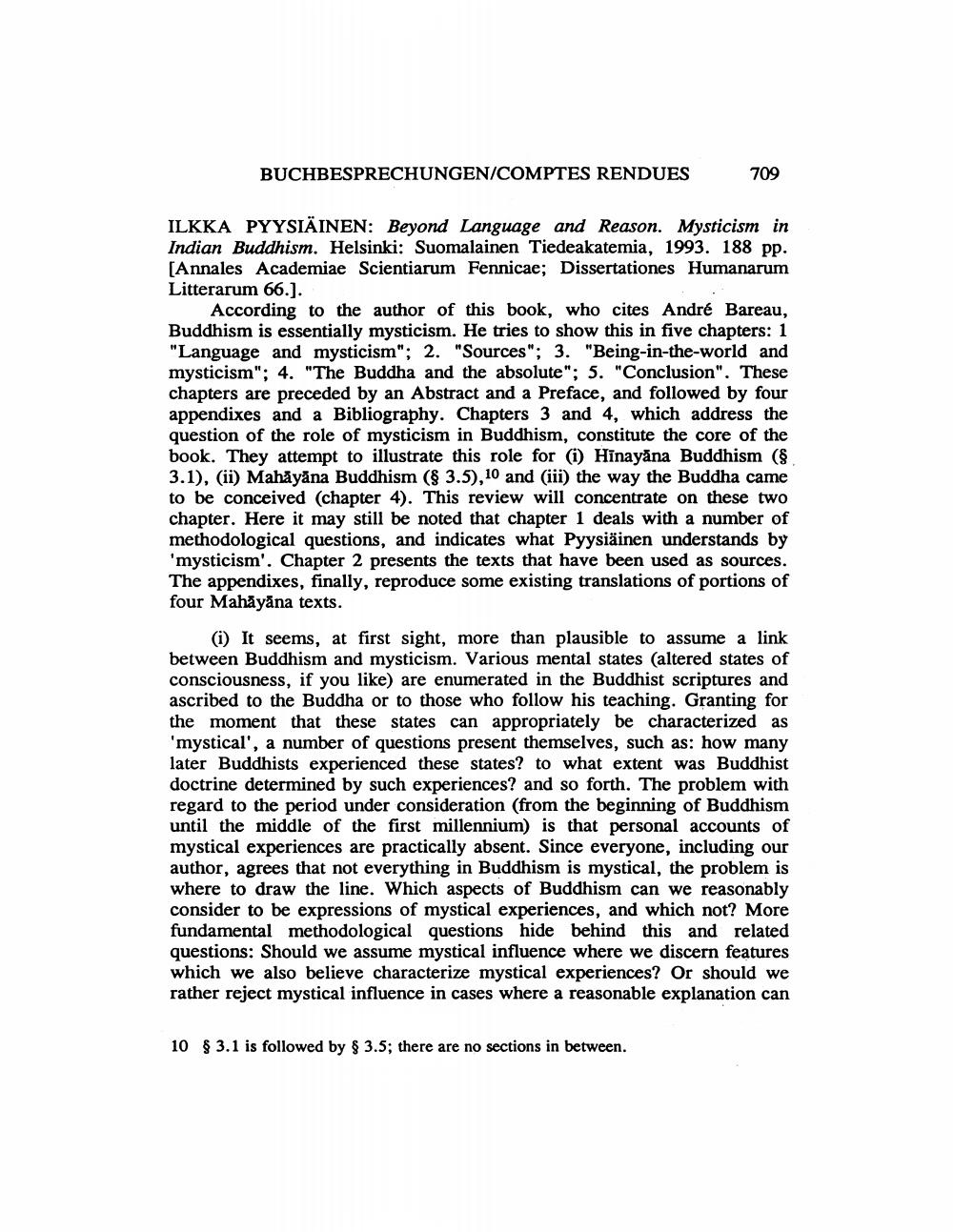________________
BUCHBESPRECHUNGEN/COMPTES RENDUES
709
ILKKA PYYSIÄINEN: Beyond Language and Reason. Mysticism in Indian Buddhism. Helsinki: Suomalainen Tiedeakatemia, 1993. 188 pp. [Annales Academiae Scientiarum Fennicae; Dissertationes Humanarum Litterarum 66.].
According to the author of this book, who cites André Bareau, Buddhism is essentially mysticism. He tries to show this in five chapters: 1 "Language and mysticism"; 2. "Sources"; 3. "Being-in-the-world and mysticism"; 4. "The Buddha and the absolute"; 5. "Conclusion". These chapters are preceded by an Abstract and a Preface, and followed by four appendixes and a Bibliography. Chapters 3 and 4, which address the question of the role of mysticism in Buddhism, constitute the core of the book. They attempt to illustrate this role for (i) Hinayāna Buddhism (8 3.1), (ii) Mahāyāna Buddhism (8 3.5), 10 and (iii) the way the Buddha came to be conceived (chapter 4). This review will concentrate on these two chapter. Here it may still be noted that chapter 1 deals with a number of methodological questions, and indicates what Pyysiäinen understands by 'mysticism'. Chapter 2 presents the texts that have been used as sources. The appendixes, finally, reproduce some existing translations of portions of four Mahāyāna texts.
(i) It seems, at first sight, more than plausible to assume a link between Buddhism and mysticism. Various mental states (altered states of consciousness, if you like) are enumerated in the Buddhist scriptures and ascribed to the Buddha or to those who follow his teaching. Granting for the moment that these states can appropriately be characterized as 'mystical', a number of questions present themselves, such as: how many later Buddhists experienced these states? to what extent was Buddhist doctrine determined by such experiences? and so forth. The problem with regard to the period under consideration (from the beginning of Buddhism until the middle of the first millennium) is that personal accounts of mystical experiences are practically absent. Since everyone, including our author, agrees that not everything in Buddhism is mystical, the problem is where to draw the line. Which aspects of Buddhism can we reasonably consider to be expressions of mystical experiences, and which not? More fundamental methodological questions hide behind this and related questions: Should we assume mystical influence where we discern features which we also believe characterize mystical experiences? Or should we rather reject mystical influence in cases where a reasonable explanation can
10
$ 3.1 is followed by $ 3.5; there are no sections in between.




